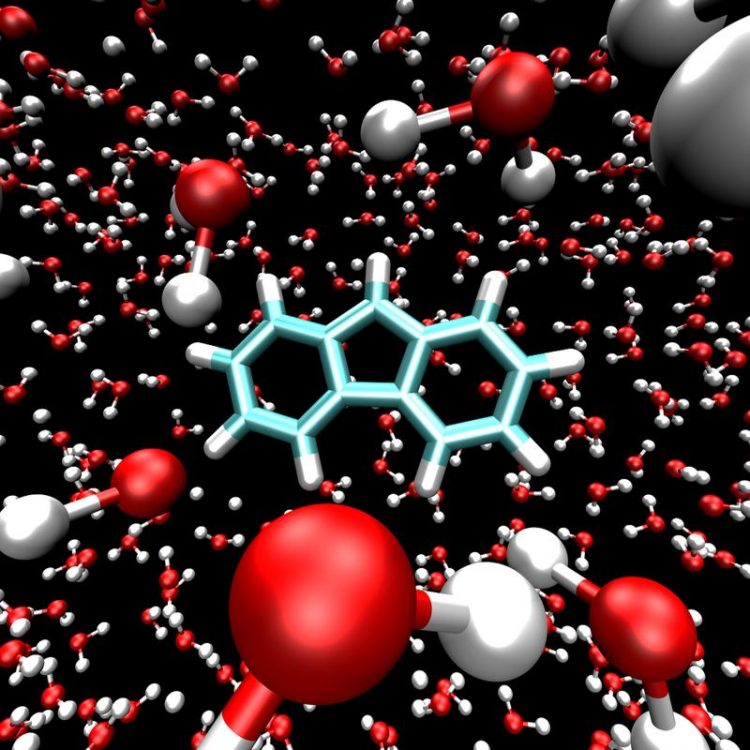'Antiaromatic compounds' is what chemists call a class of ring molecules which are extremely instable — the opposite of the highly stable aromatic molecules. Because they exist for mere split seconds, they can only be detected by extremely demanding, ultra fast methods.
Together with colleagues from Max Planck Institute for Coal Research in Mulheim, researchers from the Cluster of Excellence RESOLV at Ruhr-Universitat Bochum have succeeded in isolating the antiaromatic fluorenyl cation at extremely low temperatures in water ice.
Thus, they were able to conduct a spectroscopic analysis for the very first time. Their report is published in Angewandte Chemie.
Fundamental concept difficult to verify
The concept of “aromaticity” is fundamentally important in chemistry, and it can be found in every textbook and in every introductory lecture in Organic Chemistry. “Aromatic” is the name given to unsaturated ring molecules that are significantly more stable than expected. The term aromatic refers to the scent of the first aromatic compound that was ever discovered and it is, for example, an element of the trade name ARAL = “Aromaten und Aliphaten”.
The theoretical concept of “aromaticity” was verified by the fact that the reverse effect does also exist: i.e. “antiaromaticity”, which results in a destabilisation of molecules. “The problem with this concept is that, in accordance with this theory, antiaromatic compounds are extremely instable and cannot be simply synthesized and analysed,” explains Prof Dr Wolfram Sander from RESOLV.
Staggeringly simple in conceptual terms
Under the umbrella of the Cluster of Excellence, Sander and his colleagues have now researched in what way charged, highly reactive molecules can be stabilised using water as a solvent at extremely low temperatures. Together with a theory group at MPI for Coal Research in Mülheim, an experimental group at the Department of Chemistry and Biochemistry at RUB successfully isolated the long searched-for antiaromatic fluorenyl cation, a prototype of the concept of antiaromaticity.
For this purpose, they isolated that molecule in a matrix of water at the extremely low temperature of three Kelvin – only three degrees centigrade above absolute zero. “Under these conditions, this molecule is entirely stable and can be analysed using standard spectroscopy,” as Wolfram Sander elaborates the result.
At room temperature, conversely, it demonstrates its extreme instability: it is gone within a mere five picoseconds (that is 0.000 000 000 005 seconds). “In this time even light progresses only as far as 1.5 millimetres,” illustrates the researcher. “This demonstrates neatly the effectiveness of this conceptually staggeringly simple new method for stabilising reactive ions.”
Title catalogue
Paolo Costa, Iris Trosien, Miguel Fernandez-Oliva, Elsa Sanchez-Garcia and Wolfram Sander: The Fluorenyl Cation. In: Angewandte Chemie, DOI: 10.1002/ange.201411234, http://onlinelibrary.

























